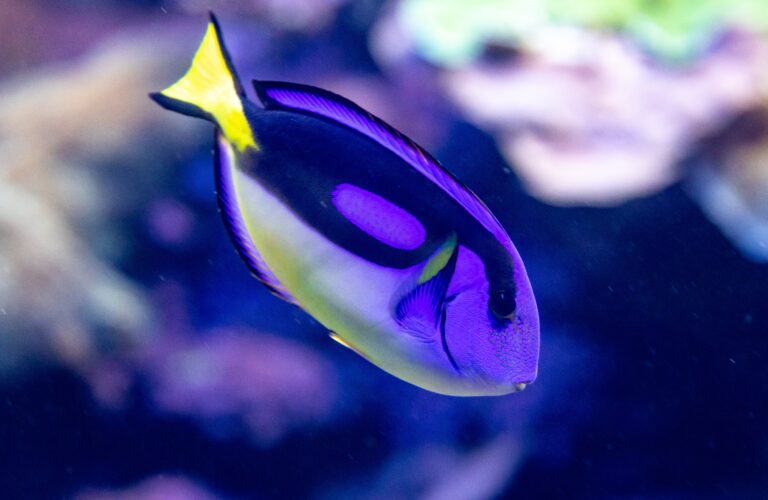Introduction
Dive into the mysterious depths of our oceans where an extraordinary world of intelligence and adaptation exists – the realm of deep-sea cephalopods. From the elusive giant squid to the mesmerizing vampire squid, these creatures have fascinated scientists and explorers for centuries. As we embark on this exploration, we unveil the hidden wonders of deep-sea cephalopods and the crucial need for their conservation. Join us in discovering the guardians of the abyss, as we delve into the efforts aimed at preserving these unique and enigmatic species.
The Spectacular World of Deep-sea Cephalopods
Exploring the mysterious depths of the ocean unveils a spectacular world inhabited by some of the most captivating creatures, and among them are the deep-sea cephalopods. These remarkable marine animals belong to the class Cephalopoda, which includes squids, octopuses, and cuttlefish. While their shallow-water relatives often steal the spotlight, the deep-sea cephalopods boast unique adaptations and mesmerizing features that set them apart.
Highlighting Some of the Most Unique and Lesser-Known Species
In the inky blackness of the deep sea, cephalopods have evolved into an array of fascinating species. One such example is the Dumbo octopus, named for its ear-like fins that resemble the beloved Disney character. Another intriguing species is the vampire squid, with its dark red hue and cloak-like webbing between its tentacles. Delving into the details of these lesser-known species unveils a world of diversity and specialized adaptations that allow them to thrive in extreme conditions.
Discussing the Challenges of Studying and Observing Deep-sea Cephalopods
Studying deep-sea cephalopods presents a unique set of challenges for marine researchers. The extreme depths, often exceeding 2,000 meters, make exploration difficult and expensive. Furthermore, these elusive creatures are masters of camouflage, making them adept at avoiding detection. Technological advancements, such as remotely operated vehicles (ROVs) and deep-sea submersibles, have enabled scientists to capture rare footage and gather valuable data. Despite these challenges, the quest to understand these enigmatic creatures continues, driven by the potential insights they offer into deep-sea ecosystems.
The Significance of These Creatures in Maintaining the Balance of the Deep-sea Ecosystem
Deep-sea cephalopods play a crucial role in maintaining the delicate balance of the deep-sea ecosystem. As skilled predators, they help control the population of prey species, preventing overpopulation that could disrupt the intricate web of life below the ocean’s surface. Additionally, their interactions with other deep-sea organisms contribute to the overall health and stability of this unique environment. Understanding the ecological importance of these creatures underscores the need for continued research and conservation efforts to ensure the sustainability of deep-sea ecosystems.
Threats to Deep-sea Cephalopods:
Deep-sea cephalopods, including octopuses, squids, and cuttlefish, face a myriad of threats that jeopardize their populations and the delicate balance of deep-sea ecosystems. One significant threat is overfishing, driven by the demand for these fascinating creatures in both traditional and gourmet cuisines. The deep-sea environment makes cephalopod populations particularly vulnerable to exploitation due to their slow growth rates and low reproductive output. Moreover, the lack of regulatory frameworks for deep-sea fisheries exacerbates the pressure on cephalopod populations, putting them at risk of decline.
Another pressing threat is the impact of deep-sea mining activities. As technology advances, the quest for valuable minerals and resources has expanded into the deep-sea environment, disturbing fragile ecosystems. Deep-sea cephalopods, with their sensitivity to habitat changes, face disruption in their feeding and breeding grounds. The destruction of their habitats due to mining operations poses a direct threat to their survival, further compounding the challenges these creatures already encounter in their harsh, deep-sea habitats.
Human Activities and their Impact on Deep-sea Ecosystems:
Human activities beyond direct exploitation and mining also pose indirect threats to deep-sea cephalopods and their ecosystems. For instance, pollution from land-based sources can find its way into the deep sea, affecting water quality and, consequently, the health of cephalopod populations. Plastic debris, chemicals, and other pollutants can have detrimental effects on cephalopod physiology, behavior, and reproductive success. Additionally, the noise generated by shipping and industrial activities can disrupt communication and navigation among cephalopods, impacting their ability to locate mates and prey.
Climate Change and its Implications for Deep-sea Cephalopod Habitats:
Climate change poses a complex and interconnected threat to deep-sea cephalopods and their habitats. The warming of surface waters influences ocean circulation patterns, potentially altering the distribution of cephalopod prey and predators. This, in turn, can affect the abundance and availability of food resources for deep-sea cephalopods. Furthermore, changes in ocean temperature and chemistry may impact the cephalopods directly, influencing their growth, development, and survival.
Ocean acidification, a consequence of increased carbon dioxide absorption by the oceans, poses a specific threat to cephalopods with their calcium carbonate-based shells. As acidity levels rise, the shells of cephalopods may become more susceptible to dissolution, affecting their ability to regulate buoyancy and protect themselves from predators. Collectively, the multifaceted impacts of climate change on deep-sea cephalopod habitats underline the urgency of addressing these global environmental challenges to ensure the long-term health of these remarkable creatures.

Conservation Initiatives and Research Efforts
In recent years, there has been a surge in conservation initiatives and research efforts targeting deep-sea cephalopods, driven by the growing recognition of their ecological significance. Organizations such as the Deep-Sea Conservation Coalition and the Census of Marine Life have spearheaded projects to assess the population status, distribution, and threats faced by these enigmatic creatures. These initiatives employ cutting-edge technologies, including remotely operated vehicles (ROVs) and autonomous underwater vehicles (AUVs), to explore the depths where cephalopods reside. By understanding their habitats and migration patterns, scientists can better formulate conservation strategies to protect these elusive and vulnerable species.
Understanding Behavior and Ecology
Comprehending the behavior and ecology of deep-sea cephalopods is crucial for effective conservation. These creatures play a vital role in marine ecosystems, serving as both predators and prey. Research efforts focus on unraveling the mysteries of their reproductive strategies, feeding habits, and interactions with other deep-sea organisms. Knowledge of their life history allows scientists to identify critical areas for protection and implement measures to mitigate human-induced threats such as deep-sea trawling and mining. The interconnectedness of these species with their environment underscores the importance of gaining insights into their behavior to ensure the long-term health of deep-sea ecosystems.
Collaboration Between Scientists, Conservationists, and Policymakers
The success of conservation initiatives heavily relies on collaboration between scientists, conservationists, and policymakers. Joint efforts facilitate the translation of research findings into effective policies and conservation measures. Organizations like the Marine Conservation Institute and the International Union for Conservation of Nature (IUCN) foster cooperation, bridging the gap between scientific knowledge and actionable policies. By working hand-in-hand, these stakeholders can advocate for the establishment of marine protected areas, implement sustainable fishing practices, and raise awareness about the conservation needs of deep-sea cephalopods. This collaborative approach ensures a holistic and well-informed strategy for the preservation of these intriguing and vital marine species.
The Significance of Establishing Marine Protected Areas for Deep-Sea Cephalopods
Marine Protected Areas (MPAs) play a crucial role in safeguarding the delicate ecosystems that deep-sea cephalopods call home. These areas act as sanctuaries, providing a haven for marine life to thrive without the constant threat of human activities such as overfishing and habitat destruction. Deep-sea cephalopods, including squid and octopuses, are particularly vulnerable to disturbances due to their slow growth rates and low reproductive rates. Establishing MPAs ensures the preservation of these unique and often mysterious creatures by maintaining the integrity of their habitats. By designating specific zones as off-limits to harmful activities, we can contribute to the resilience and sustainability of deep-sea cephalopod populations.
Success Stories of Existing Marine Reserves and Their Impact on Cephalopod Populations
Several marine reserves around the world have demonstrated the positive impact of protection on cephalopod populations. For instance, in the Mediterranean, the establishment of the Torre Guaceto Marine Protected Area led to an increase in octopus abundance and size. Similarly, in New Zealand’s Poor Knights Islands Marine Reserve, researchers observed a notable recovery of squid populations. These success stories underscore the effectiveness of MPAs in promoting cephalopod biodiversity and abundance. By learning from these examples, we can refine conservation strategies and implement more targeted measures to ensure the sustained health of deep-sea cephalopod communities.
Advocacy for Increased Protection and Sustainable Management of Deep-Sea Habitats
Despite the success stories, deep-sea habitats are still facing numerous threats, necessitating increased advocacy for expanded protection and sustainable management. Climate change, deep-sea mining, and pollution continue to pose challenges to the well-being of cephalopod populations. Strengthening conservation efforts involves advocating for the establishment of additional MPAs and implementing stricter regulations on activities that can harm these ecosystems. Collaborative initiatives between scientists, policymakers, and local communities are crucial for fostering a comprehensive approach to deep-sea habitat protection. Through active advocacy, we can ensure the long-term survival of deep-sea cephalopods and maintain the ecological balance of these unique underwater environments.
Video Credit: Natural World Facts
FAQs
Q. Why are deep-sea cephalopods considered unique?
A. Deep-sea cephalopods exhibit extraordinary adaptations and behaviors, making them unlike any other marine species.
Q. How does climate change affect deep-sea cephalopod populations?
A. Climate change poses threats to deep-sea cephalopods, impacting their habitats and food sources. Conservation efforts aim to mitigate these effects.
Q. What role do marine protected areas play in cephalopod conservation?
A. Marine protected areas serve as safe havens for deep-sea cephalopods, allowing them to thrive without the immediate threats of overfishing and habitat destruction.
Q. Can bioluminescence in deep-sea cephalopods be harnessed for scientific research?
A. Yes, scientists study the bioluminescence of deep-sea cephalopods for various purposes, including understanding their behavior and developing new technologies.
Q. How can individuals contribute to deep-sea cephalopod conservation?
A. Individuals can support conservation efforts by raising awareness, supporting sustainable seafood choices, and participating in initiatives promoting ocean health.
Q. What is the significance of deep-sea cuttlefish camouflage in conservation?
A. Deep-sea cuttlefish use camouflage for survival. Preserving their natural behaviors, including camouflage, is crucial for the overall health of the abyssal ecosystem.
Conclusion
In the shadowy depths of the ocean, deep-sea cephalopods stand as guardians of an ecosystem shrouded in mystery. As our understanding of these remarkable creatures grows, so does the urgency to protect them from the mounting threats they face. Conservation initiatives and research efforts play a pivotal role in securing the future of these unique cephalopod species. As stewards of the oceans, it is our responsibility to champion their cause, establishing marine protected areas and sustainable practices that ensure the continued survival of these deep-sea marvels. Through collective efforts, we can ensure that the guardians of the abyss endure for generations to come, maintaining the delicate balance of our planet’s most mysterious ecosystem.
UP NEXT
The Threat of Ocean Conservation Greenwashing: Ensuring Authentic Commitment



